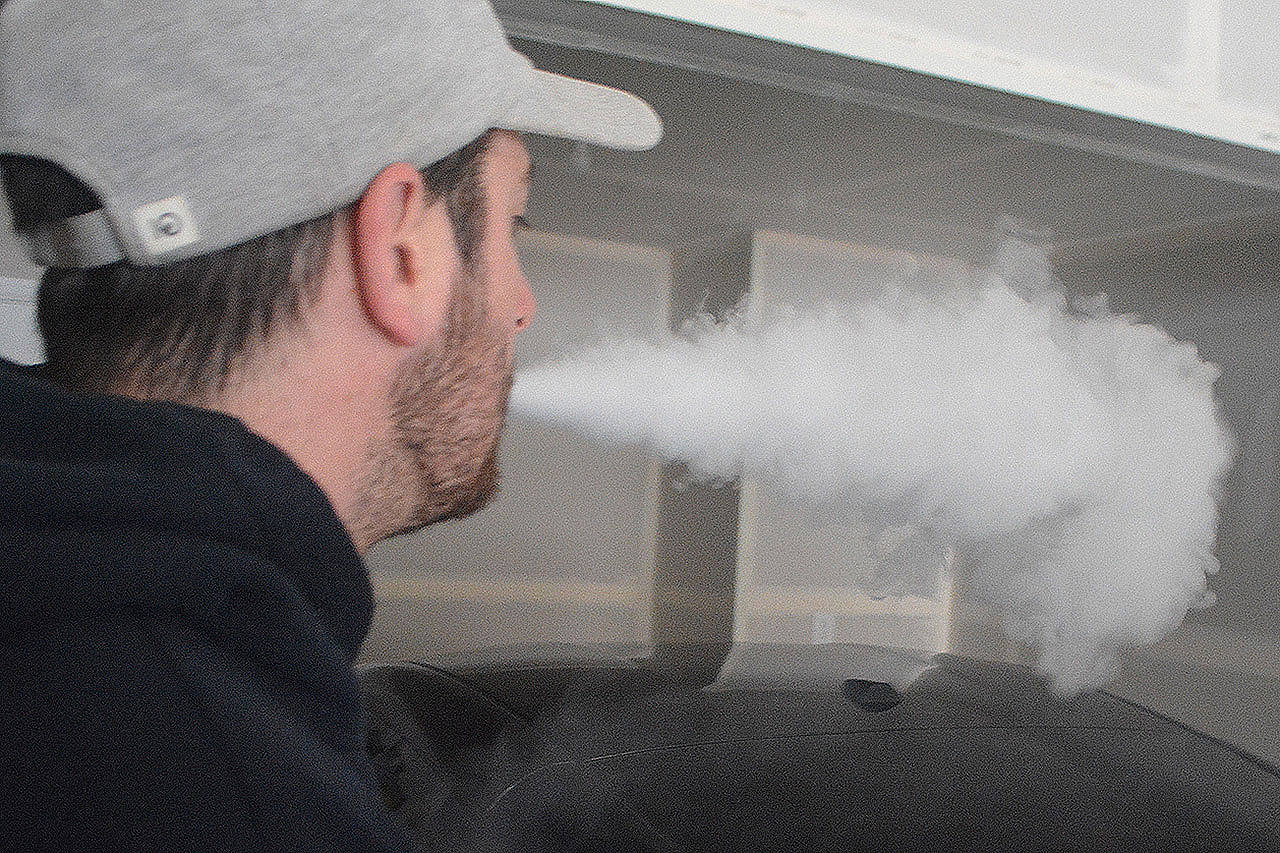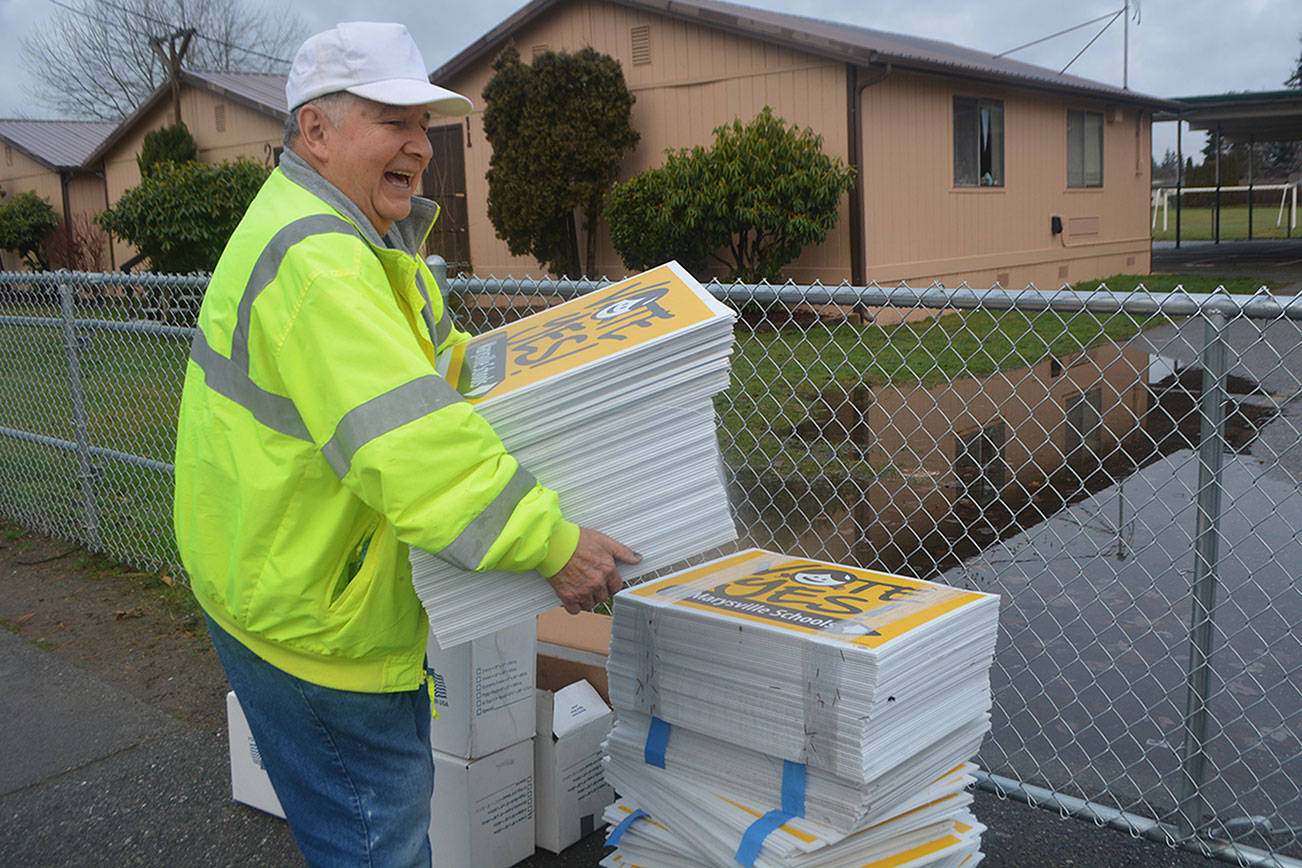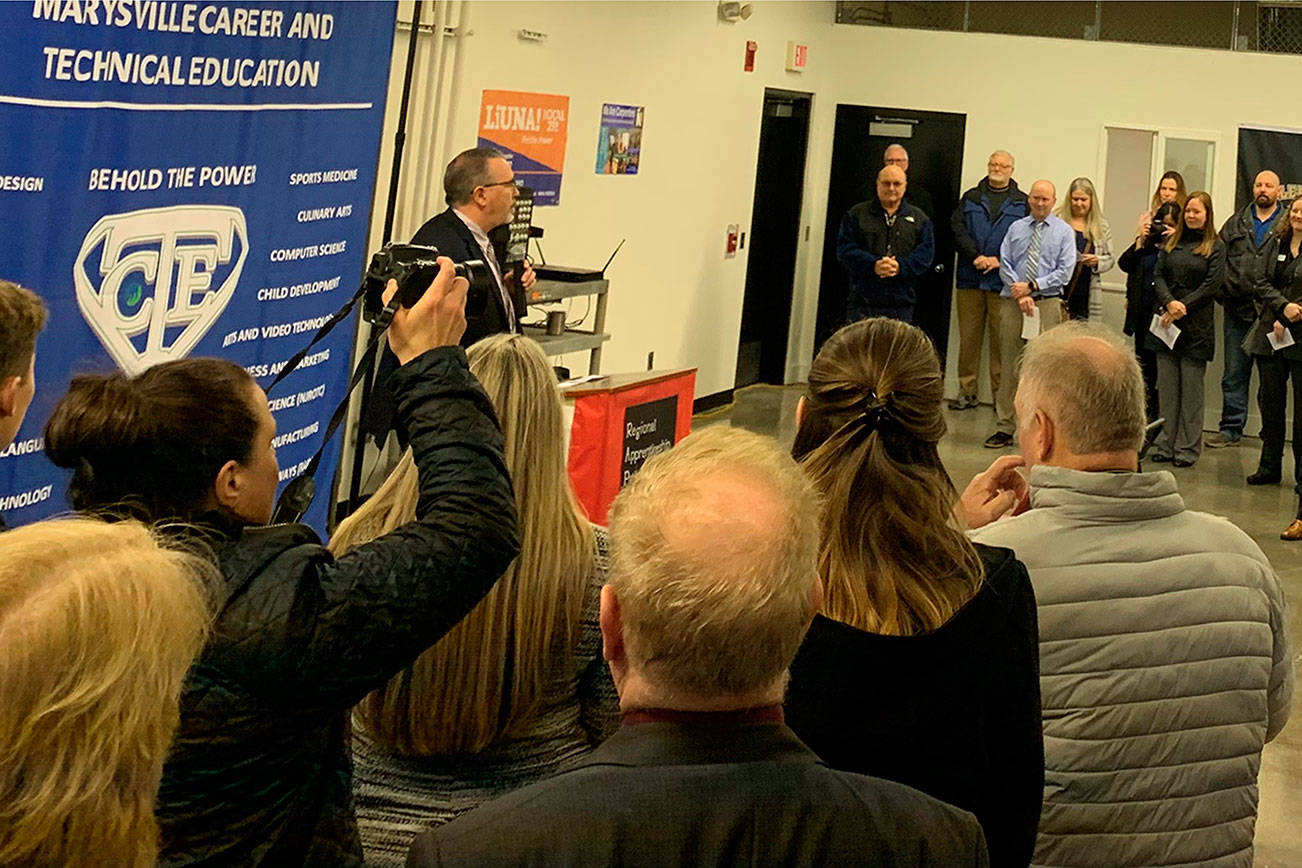Last May at a flatly attended forum aimed at empowering parents with anti-drug knowledge, Arlington High School principal Duane Fish stood up and asked why communities aren’t more alarmed about the damage that vaping is causing developing minds in teens.
With two months left in the last school year, the district had disciplined 60 students for vaping, in one instance seizing a Juul vaporizor shaped like a USB flash drive accidentally left plugged into a school laptop, in which one inhaled flavored pod can dispense nicotine equivalent to a pack of cigarettes.
“Vaping is an unregulated industry, and all this nicotine pumping into our teenagers and their developing brains is not a good thing at all,” Fish said. “It’s nicotine on steroids.”
Among statistics cited in the countywide Healthy Youth Survey, from 2016-2018, students who had tried e-cigarettes or a vape pen in the 8th, 10th and 12th grades increased by 19%, 35% and 48% respectively. When looking at those same groups, current users climbed by 10%, 23% and 30%.
Arlington school officials said rates of student vaping in the district closely mirror national rates. Among AHS 10th graders, 21% said they had used a vaping device, compared to 13% in 2016’s youth survey. Of those who had tried it, four times as many 10th graders chose to vape instead of smoke cigarettes, wrongly believing that vaping is safer, but unaware much of the vape liquid can be laced with THC or contain other harmful and toxic chemicals.
The number of vaping-related incidents at the high school has slowed some this year to seven as public health agencies raise alarms over underage use of e-cigarettes and other vaping products, but it’s too soon to celebrate a turnaround, Fish said.
“Vaping is going to continue to be an issue until families push back against the industry,” he said. “There are only fewer incidents because there’s a white hot spotlight – the media – on it now.”
The state Board of Health Wednesday officially adopted a temporary ban on the sale of flavored vaping products over concerns of lung illness that has sickened hundreds of people. The ban, initially lasting four months but renewable, will apply to flavored products containing nicotine as well as the flavored products with the cannabis extract THC.
Meantime, school districts like Arlington and Marysville are grappling with ways to deter kids from a nearly undetectable habit that can be sated sneakily in hallways, classrooms, bathrooms and off campus, way from the prying eyes of teachers and parents.
The high school addresses the dangers of vaping and other chemical use in their health curriculum, posts information in common areas, and teachers are paying more attention to the vaping issue. Arlington is also fortunate to have valuable intervention resources. They also posted the U.S. Surgeon General’s warning about e-cigarettes and vaping on social media.
Even though vaping is popular in Marysville according to a youth survey, the school district said it hasn’t been much of an issue thus far.
“That’s not to say that it doesn’t happen, its just not happening at an alarming rate,” said Greg Dennis, the district’s safety director.
He added vaping does seem to be pretty consistent in both middle and high school.
As for learning about the dangers of vaping, Dennis said he didn’t know of any curriculum in health or elsewhere. However, posters around the schools warn students about the harm vaping can cause.
“With all the recent publicity surrounding the dangers of vaping (and the multiple vape-related deaths), students are hopefully more aware than ever of these hazards,” he added.
Surveillance cameras and “vape detectors” have been helpful in exposing vaping activity in some schools across the country.
Arlington High School has cameras in common areas and the parking lot, but with vaping and Juuling devices that don’t set off plumes making them even undetectable in a classroom, their effectiveness is questionable, Fish said.
Dennis said of Marysville, “We have limited cameras at this time, but are working on adding cameras to our campuses soon. Secondary schools will be addressed first, with elementary schools to follow.”
Because it’s not a major problem at school, the district has not purchased restroom vape detectors or cameras outside bathrooms.
Arlington schools use progressive discipline to handle instances of vaping or possession of vaping devices, confiscate the device and turn it over to police or a family member.
New state laws rule out suspension initially until the school can show that administrators have worked with families to address behavioral-related violations, including e-cigs and tobacco products, Fish said. More commonly, students are counseled and educated about the risk. A behavioral contract is drawn up, and if another violation occurs, the punishment can be in-school or outside suspension.
“What we really want to find it is, does the student have a habit that is hard to overcome,” Fish said. “We want them to be healthy when they’re here learning.”
In Marysville schools, said Dennis, “We do take the vapes away, as well as any juices or vape accessories,” adding appropriate consequences are given for students that vape or are in possession of vapes.
Even though it’s not a problem in schools in Marysville, that doesn’t mean local students aren’t vaping. In a youth survey in 2018, with 420 seniors participating, they said 38 percent had tried vaping, while only 8 percent had smoked cigarettes. Of those, 62 percent had vaped using nicotine, 30 percent tried flavored nicotine and 17 percent used marijuana. Of the students who vaped, 38 percent said they are American Indian/Alaska Native, 35 percent multi-racial and 33 percent white.
Steps are being taken nationwide to slow the epidemic, which has abruptly changed an almost 60-year decline in smoking.
This month’s Time magazine article says the Food and Drug Administration in September threatened Juul with fines and product seizures if it kept promoting e-cigarettes as being safer than traditional cigarettes. It says in eight months, unless e-cigarette companies can prove they protect public health, the products could be pulled from the market. Companies claim they are beneficial for longtime smokers. They contain fewer toxic chemicals, including carcinogins, than cigarettes. But the effects of other ingredients are not known as Juul started during a regulatory loophole in the FDA system and hit the shelves without having to deal with strict FDA regulations, Time reported.
The vaping and juuling industry has taken a page from the cigarette industry’s playbook to market and advertise their products to kids to build the nicotine habit quickly, using cool colors, shapes and flavors such as mint, mango and fruit medley to dispense it.
“They’ve gotten young people trapped,” he said. “Now we’ve got to learn how to get them out.”
Fast facts
•Tobacco use remains the leading cause of preventable death and disease in the state.
•104,000 Washington youth today will ultimately die prematurely from smoking.
•The effects of nicotine exposure in youth can include lower impulse control, mood disorders and brain damage.
•The minimum age to buy such products is going up to 21 in January 2020, but youth can still get them from older friends and adults.
In Arlington
Stilly Valley Health Connections is hosting a 3-hour training-of-the-trainer-style workshop to introduce the concepts and devices for vaping nicotine and marijuana. Training is provided by representatives from the American Lung Association and Snohomish Health District. Classes are for school administrators and educators, health care professionals, community members and youth leaders, as well as anyone interested in learning more about the dangers of e-cigarette use.
The next free workshop is Nov. 13 from 5:30-8:30 p.m. It is at Stilly Valley Health Connections, 875 Wesley St., Suite 240.
Sign-up link is at www.stillyvalleyhealth.org or call Stilly Valley Health Connections at 360-386-9918.








